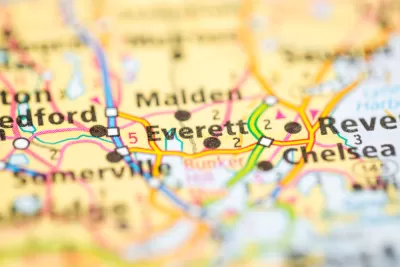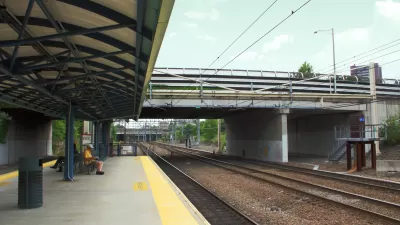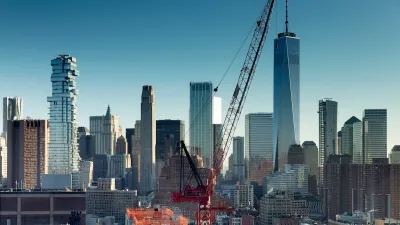To avoid the pitfalls of disconnected, car-centric suburbs, local governments must proactively plan for sustainable development in growing areas.

The area experiencing the most rapid growth in Massachusetts is, according to Amy Dain, "a place without an identity or united governance, a district that straddles the Mystic and Malden Rivers at the intersection of six cities: Everett, Medford, Somerville, Chelsea, Malden, and also a bit of Boston, at Charlestown." A proposed 21-story tower recently drew attention to the area for its outsized height. Since then, another two high-rise projects have been built or proposed. The region is "a natural hub between Boston-Cambridge-Somerville, the North Shore, and 128-North," an area primed for urban development with an existing "framework for connectivity" and surrounded by residential communities, employment centers, and amenities. "The six-city area is like a city center, for its density and mix of everything. Except it is not like a city center, at least not yet. For now it is an archipelago of private developments in need of the public connectivity so well known in historic downtowns."
With this growth, Dain argues, comes a need for "good government oversight and public investment" to ensure equitable, sustainable development. "Without public intervention, private developments will be primarily car-oriented, even when located near train stations, rivers, and rail trails." The same, Dain writes, goes for affordable housing and commercial real estate. "The market will not, on its own, deliver new buildings priced for low-income residents and scrappy entrepreneurs. It is the role of government to make sure that diversity gets built in when all-new city-centers rise." Dain asserts that local governments must emphasize "building for non-car mobility" which "takes so much more planning and coordination, across government bodies and parcels of land." As the region grows, "our shared task is not to build a series of gated-style, car-oriented developments, but to grow a resilient downtown for everyone."
FULL STORY: Building a city center serving six cities

Study: Maui’s Plan to Convert Vacation Rentals to Long-Term Housing Could Cause Nearly $1 Billion Economic Loss
The plan would reduce visitor accommodation by 25,% resulting in 1,900 jobs lost.

North Texas Transit Leaders Tout Benefits of TOD for Growing Region
At a summit focused on transit-oriented development, policymakers discussed how North Texas’ expanded light rail system can serve as a tool for economic growth.

Using Old Oil and Gas Wells for Green Energy Storage
Penn State researchers have found that repurposing abandoned oil and gas wells for geothermal-assisted compressed-air energy storage can boost efficiency, reduce environmental risks, and support clean energy and job transitions.

Santa Barbara Could Build Housing on County Land
County supervisors moved forward a proposal to build workforce housing on two county-owned parcels.

San Mateo Formally Opposes Freeway Project
The city council will send a letter to Caltrans urging the agency to reconsider a plan to expand the 101 through the city of San Mateo.

A Bronx Community Fights to Have its Voice Heard
After organizing and giving input for decades, the community around the Kingsbridge Armory might actually see it redeveloped — and they want to continue to have a say in how it goes.
Urban Design for Planners 1: Software Tools
This six-course series explores essential urban design concepts using open source software and equips planners with the tools they need to participate fully in the urban design process.
Planning for Universal Design
Learn the tools for implementing Universal Design in planning regulations.
Ascent Environmental
Borough of Carlisle
Institute for Housing and Urban Development Studies (IHS)
City of Grandview
Harvard GSD Executive Education
Toledo-Lucas County Plan Commissions
Salt Lake City
NYU Wagner Graduate School of Public Service





























